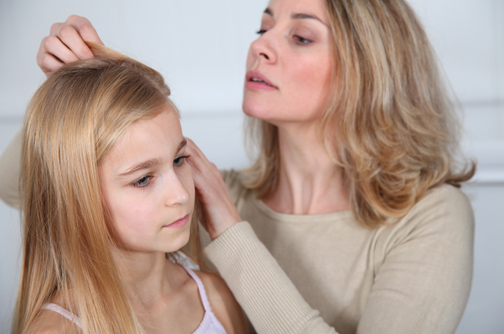Treatment Of Head Lice Naturally

Head lice aren’t something most people in the US or Canda or any other developed country have a problem with but they are a big in most developing countries and it is true that the potential exists to get them even in developed countries. In fact, poor people can and do get them quite frequently because they are primarily the result of poor personal hygiene.
Head lice are related to body lice and pubic lice, both of which are known to carry diseases. Luckily, head lice are not known to carry diseases and are nothing but a cosmetic problem and, to some degree, a bit uncomfortable in advanced stages of infestation. Head lice can be treated with several different types of over-the-counter (OTC) medication as well as a variety of stronger, prescription-type medications.
In all cases, the treatment regimen is very similar with only slight variation in frequency of treatment and/or safety precautions due to the strength of the medication itself.
First, here’s basically what these nasty little critters are: Head lice are very tiny, parasitic insects that effect humans only and live on human scalp. Here is what Nitwits, the leading experts on lice removal say: “the Their food is human blood… somewhat similar to fleas or ticks. They really can’t be ‘caught’ because they’re too small. They’ve got to be killed. Little kids and women with long hair are the most likely to have problems with them.”
Most of the shampoo products will work to some degree but they’re not always good for your hair because some of them are simply too strong. For that reason, it’s always a good idea to ask the advice of your pharmacist or your medical practitioner. They’ll know which products are safe. Try to find products that rely on natural ingredients.
One popular active ingredient, because it is effective, is permethrin (AKA: “Nix”) which typically is packaged as a 1% solution in a base of some kind. It is safe too.
One thing you don’t want to forget is that even though head lice and nits cannot survive more than a few hours away from the warmth of your scalp, the do fall of onto surrounding bedding, clothes and even carpets. For that reason, you should be sure and thoroughly wash all bed linens and clothes that might have become infested with them.
You’ve perhaps seen it on the news but something head lice become a big problem in hotels in certain parts of even the US and Canada..all because one person brings them in and the sheets aren’t properly cleaned (i.e. washed in very hot water like they need to be to kill the lice and lice eggs).
That’s pretty much all there is to it. As we said, it’s not likely a problem you’ll encounter.but you could. Now you know it’s at least not life-threatening and what you can do about it.
By Steph Barmer. A local business blogger at the Local Q&A.
